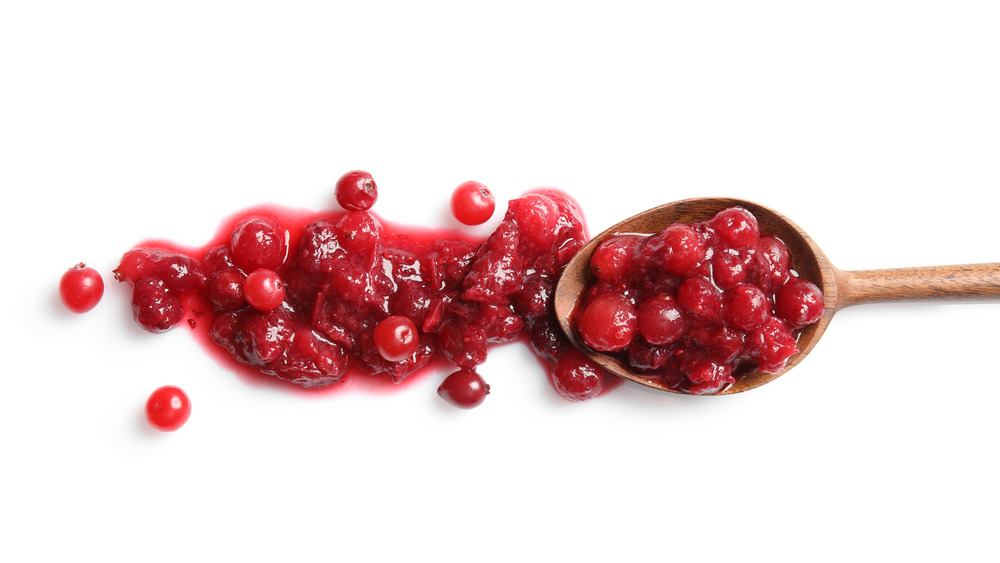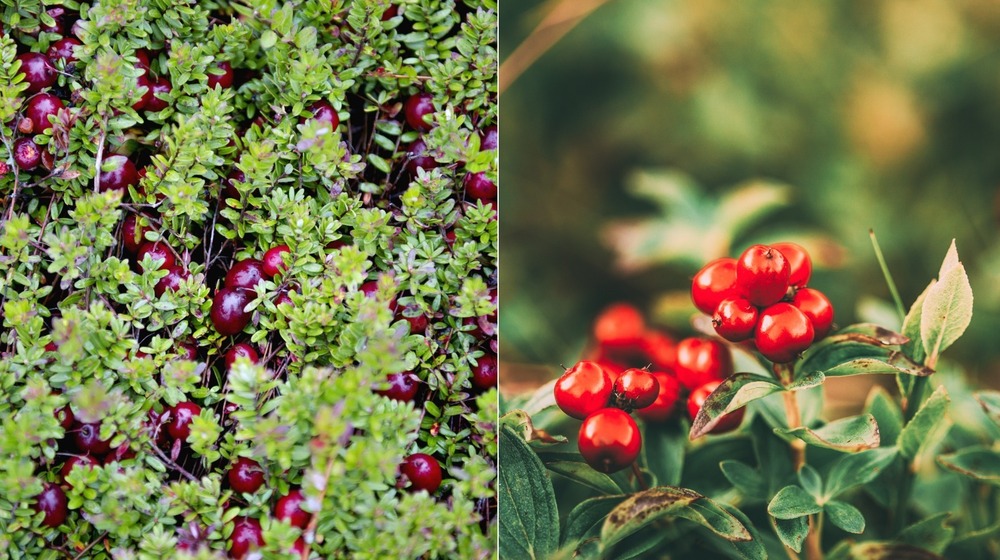The Real Difference Between Cranberries And Lingonberries
If the only way you know how to distinguish a cranberry from a lingonberry is whether it comes in a can of jelly or on an IKEA plate with meatballs, this information is for you. Two delightfully tart and flavorful members of the Vaccinium family, these berries are different, but part of the larger huckleberry and blueberry clan (via Arctic Flavors). For those fans of Latin, the lingonberry, or cowberry, is officially Vaccinium vitis-idaea while the cranberry is Vaccinium oxycoccos in Europe and Vaccinium macrocarpon in the United States and Canada. Both berries prefer somewhat colder northern climates, according to Arctic Flavors.
Cranberries, like blueberries, are often cultivated commercially on farms although both can grow in the wild. Arctic Flavors explains that lingonberries, like huckleberries, are usually wild and rarely cultivated. While both berries are round, shiny, and become bright red, the cranberry is typically three to four centimeters larger than the lingonberry. You can't judge by the fruit interior, as cultivated berries typically have a white inside while wild berries are more pinkish. As for tartness, lingonberries are just slightly sweeter naturally.
Cranberries and lingonberries are almost the same, but not quite
Lingonberries are high in vitamins E, A, and C, contain several B vitamins, and provide some potassium, calcium and magnesium (via SoftSchools). Cranberries are also nutritious and a great source of vitamins C, E, and B5, and manganese. Both fruits are typically served cooked and/or sweetened and produce a lovely red color in cooking. Lingonberries are commonly used in jams and jellies, as well as in desserts like cheesecake. These sweet-sour berries are often served alongside mashed potatoes and roast or meatballs. Another popular lingonberry preparation is lingonberry vodka — which is harder to find in the United States.
Cranberries are almost always sweetened due to their more acidic and tart nature. Cranberries are sometimes dried as well as made into the traditional Thanksgiving day sauce. Cranberries are also commonly made into a juice or juice blend. Both berries have achieve a continued popularity for taste, as well as for purported health benefits, according to SoftSchools. While cranberry juice is said to help with urinary tract infections, lingonberries have been used in teas for scurvy or syrups for kidney and stomach ailments. Both berries are considered delicious when prepared correctly.

